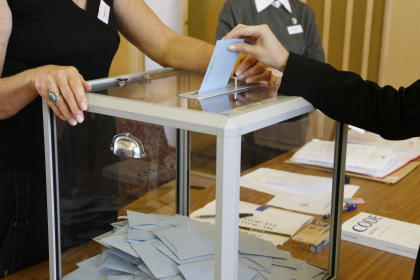 Business 2 Community
Business 2 CommunityCandidates, Stop The Mudslinging. Give Your Voters What They Really Want – Trust

As the election campaign season begins to ramp up, the news media is full of projections about what voters want. According to the latest NBC News/Wall Street Journal poll, the American general electorate is most comfortable with a presidential candidate who is African-American, followed by a woman under the age of 50 or a Hispanic. Who is least likely to win? A candidate with no political experience or no college degree.
But what about trust? Every voter looks for a candidate who is credible and believable. Candidates may gain attention by having extraordinary political and people skills, but the average voter doesn’t care about that. What voters really want is someone who shares their values and is trustworthy.
3 ways to establish the voting public’s trust
How do you know if your government leadership or candidate is building trust among constituents? According to Robert Galford, co-author of “The Trusted Leader,” this quality should be measured in terms of these three areas:
Strategic trust. Do your constituents trust that government leaders will set the right course? On a regular basis, you should assess whether your administration’s goals align with the overall mission of the campaign. Are you delivering on your promises? If not, reevaluate as soon as possible.
Personal trust. People responsible for implementing programs must have the reputation of being trustworthy and fair. To earn this kind of trust, staff members must understand how the overall mission of every initiative translates into their daily decisions and impacts citizens of all demographics. At the end of the day, your constituents want to be heard and included.
Organizational trust. Do your constituents trust your processes? Survey citizens to see whether they view the system and its processes are accessible, streamlined, and logical. Citizens must have a clear path to their goal, whether it’s as simple as getting a dog license or as complex as getting permits to build a new house.
Trust doesn’t happen overnight. But if you’re going to pursue initiatives and ask the public for their cooperation and support, you need to establish trust with purpose. Funneling more money into the budget is not the answer to creating an open government. It’s finding equilibrium between regulatory and privacy concerns with new levels of public involvement and innovation.
Find out how you can achieve that balance. Download the Center for Business Insight inquiry “7 Steps to Reestablish Trust in Government Operations.”
This article was syndicated from Business 2 Community: Candidates, Stop The Mudslinging. Give Your Voters What They Really Want – Trust.
More US & World News articles from Business 2 Community:
